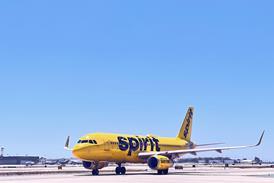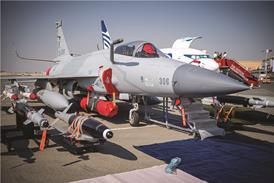Guy Norris/Palm Springs
Embraer plans to deliver more than 470 RJ-135/145s over the next five years as it rushes to boost regional jet production to 12 a month by May 2000. The company, however, is still not convinced that it wants to enter the 70-seater market.
The Brazilian manufacturer revealed details of its expansion plans as construction of the Þrst production version of the ERJ-135 began at its Sao Jose dos Campos site. The aircraft will be the Þrst of 144 ERJ-135s to be delivered from the company's current orderbook which, together with that for the ERJ-145, is valued at $4.14 billion. Embraer has announced from orders for 215 ERJ-145s and is reserving positions on roughly equal numbers of options.
"The question is, how we are going to cope?" says Embraer director of market intelligence, Orlando Neto, speaking at the Speednews regional and corporate aviation suppliers conference in Palm Springs, California. Monthly ERJ production will rise from the seven aircraft today to eight by March 1999, 10 in August 1999 and 12 by May 2000.
Based on these levels, the total ERJ-145 output for 1998 is expected to be 65 aircraft, rising to 103 in 1999 with the additional rate increase and the introduction of the first ERJ-135s in 1999.
Output is then due to level off at 102 for 2000 and 2001, with a slight rise, to 105, for 2002.
The company is anxious to avoid the problems experienced by Boeing during its recent production ramp-up and is therefore investing $133 million in manufacturing and support systems improvements as it raises rates. This is on top of $33 million already invested in similar production upgrades over the past two years, says Embraer's Neto.
Workforce productivity, based on revenue per employee, has also been steadily rising, adds Neto. The present rate is around $196,000 per employee compared with $170,000 in 1997 and $84,000 in 1995. The figures are partially due to an overall drop in the number of employees, from 13,000 to 10,000 he concedes.
In the meantime, Embraer is continuing its investigations into a possible 70-seat aircraft, and says a decision on the $1 billion-plus investment will be made in the Þrst quarter of 1999. Although it forecasts a market for up to 1,150 aircraft in the 61/90-seat category over the 1999-2008 period, Neto acknowledges considerable risks in the crowded marketplace.
Neto concludes: "We have to face six players, but it is a big temptation. Scope clauses may interfere considerably, and that's why Embraer is very careful in taking steps towards the 60/90-seat area and the huge research and development costs that are required."
Source: Flight International























